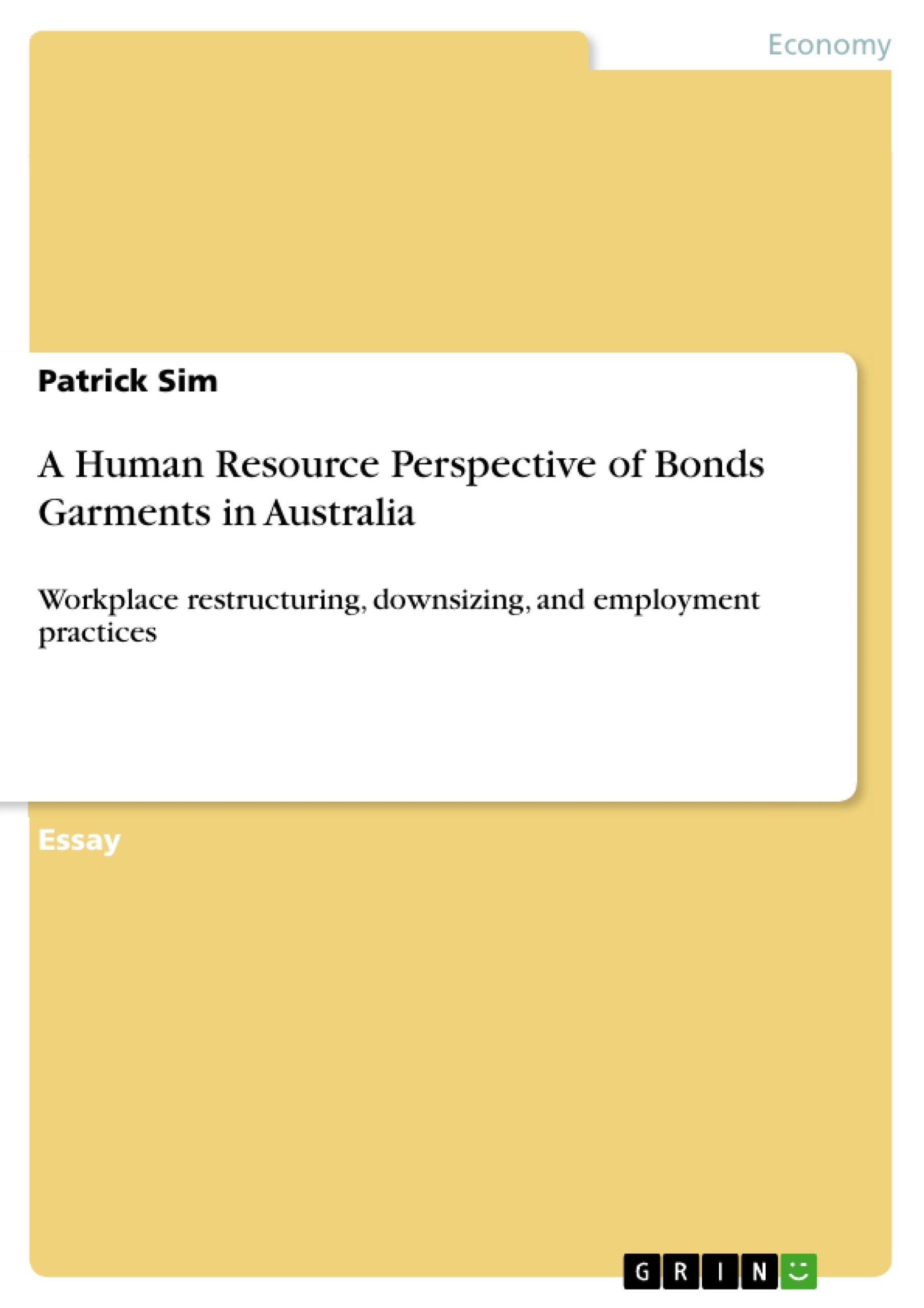The essay discusses the perspectives and significance of recruitment, selection and employee turnover functions in Bonds, a garment manufacturer located in Australia.
Much of the literature will focus on concepts of human resource (HRM) management discussions pertaining to workplace restructuring, downsizing, and employment practices. It can be posited that the key problem faced by Bonds is workplace restructuring and downsizing via outsourcing of production personnel.
It will also address human resource (HR) perceived problems underpinned at corporate policy and actual functional level. A time frame will be allocated to achieve policy and human resource goals within the company’s environment. The key proposition intended for this paper is “workplace restructuring and downsizing will radically alter human resources practices and employment methods, producing a leaner and meaner HRM function”.
Inhaltsverzeichnis (Table of Contents)
- Introduction
- Profile of Chesty Bond
- HRM significance in Bonds
- Problems of Corporate and HR policies
- Solutions to resolving corporate and HR dilemmas
- Timetable
- Conclusion
Zielsetzung und Themenschwerpunkte (Objectives and Key Themes)
This essay examines the role of recruitment, selection, and employee turnover within Bonds, an Australian garment manufacturer. It focuses on human resource management (HRM) practices in the context of workplace restructuring, downsizing, and outsourcing. The essay analyzes the challenges faced by Bonds due to these changes and explores potential solutions.
- Impact of workplace restructuring and downsizing on HRM practices
- Significance of recruitment, selection, and employee turnover in a dynamic market
- Challenges of cost reduction and maintaining employee motivation during downsizing
- Potential for skills displacement and resistance to upgrading
- Implications of outsourcing on workforce diversity and recruitment methods
Zusammenfassung der Kapitel (Chapter Summaries)
- Introduction: This chapter introduces the essay's focus on HRM practices in Bonds, particularly in relation to workplace restructuring and downsizing. It outlines the key problem of production outsourcing and its implications for HR functions.
- Profile of Chesty Bond: This chapter provides a brief history of Bonds, highlighting its origins and product diversification. It establishes the context for the essay's analysis.
- HRM significance in Bonds: This chapter explores the importance of HRM functions, such as recruitment, selection, training, and employee relations, in managing organizational assets. It discusses how these functions need to adapt to changing business cycles and the fragmented talent market.
- Problems of Corporate and HR policies: This chapter examines the challenges faced by Bonds in implementing cost reduction strategies through downsizing and outsourcing. It explores the resulting impact on employee skills, workforce diversity, and recruitment practices.
Schlüsselwörter (Keywords)
The key terms and concepts explored in this essay include: human resource management (HRM), workplace restructuring, downsizing, outsourcing, recruitment, selection, employee turnover, cost reduction, skills displacement, workforce diversity, and corporate policy.
- Arbeit zitieren
- Patrick Sim (Autor:in), 2013, A Human Resource Perspective of Bonds Garments in Australia, München, GRIN Verlag, https://www.grin.com/document/351897



